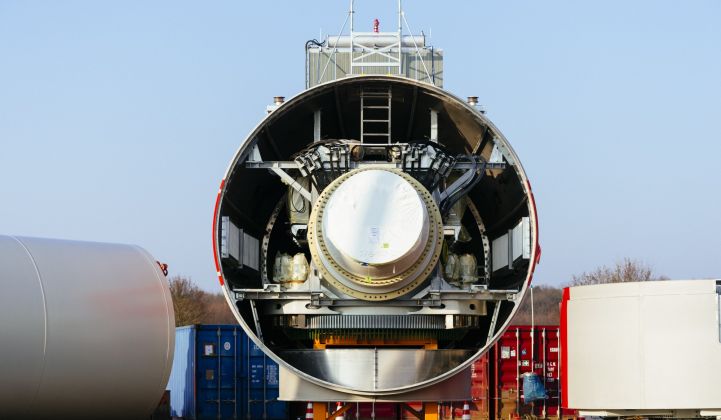How did the average cost of wind get down to $21 per megawatt-hour?
That's the question that MAKE Consulting asks -- and answers -- in a deep dive on global wind supply chains.
A large part of the answer: Wind turbine capex continues to fall, and supply chain dynamics are a crucial part of the upfront cost equation.
MAKE’s report unpacks the trends guiding the flow of goods in the wind market, which will be worth $510 billion in the period 2017-2025.
As the market expands, here are three takeaways about the wind supply chain that you may find surprising.
Lower wind profitability sees U.S. manufacturing move to Mexico
Don’t tell Trump, but Mexico is set to win out bigly on wind manufacturing jobs as U.S.-based component makers seek to cut costs by moving to cheaper labor markets. This is part of a wider trend that also affects Europe.
Intense price competition through auctions in markets around the world means original equipment manufacturers (OEMs) and component makers are looking to relocate in places where labor costs less.
Although the U.S. hasn’t introduced an auction scheme, its primary wind subsidy, the federal Production Tax Credit, is being phased out over the coming years.
Despite this, bidders in Xcel Energy’s most recent solicitation were proposing a median price of just $18.10 per megawatt-hour for wind farms to be built in 2023.
Migrating to Mexico will help OEMs deliver ultra-low-cost turbines into the North American market, while also bolstering sales in Latin America, where “regional demand is ramping up,” according to MAKE.
Spain’s wind manufacturing lines begin to roll again
Spain was once one of Europe’s top renewable energy markets, with wind and solar companies that were among the biggest and best in the world.
But a botched subsidy scheme wreaked havoc on the economy and allowed the government to declare war on renewables, introducing policies that paralyzed wind development for much of this decade.
The picture changed in 2016, when the government woke up to the fact that Spain could be in danger of missing out on its European 2020 renewables targets. It hastily awarded 4.6 gigawatts of capacity through auctions in 2016 and 2017.
Spain’s wind manufacturing capacity is now being dusted off and called back into service -- and not just to serve the local market.
As with Mexico, OEMs are being drawn back to Spain because labor costs are lower than markets in the north, such as Germany, France and the U.K. Some components are even being shipped to Latin America.
Ramp-up will take time, however.
“Retooling of the facilities is difficult for some of the components, especially the blades, because the length and height of the of the facility have to be increased,” said MAKE technology consultant Shashi Barla.
The wind industry embraces 3-D printing
The wind industry embraces cutting-edge technologies that make blades bigger, towers taller and turbines more efficient. But companies haven't grappled with 3-D printing.
That is set to change as wind OEMs seek to reduce cost, waste and particularly production times, predicts MAKE.
“3-D printing, or additive manufacturing (AM), is one of the more noteworthy opportunities for cost reduction in the wind turbine value chain,” concludes the MAKE report.
“The AM movement continues to build momentum, especially in markets where intricate multipart casting molds are being replaced with a single integrated 3-D printed mold.”




